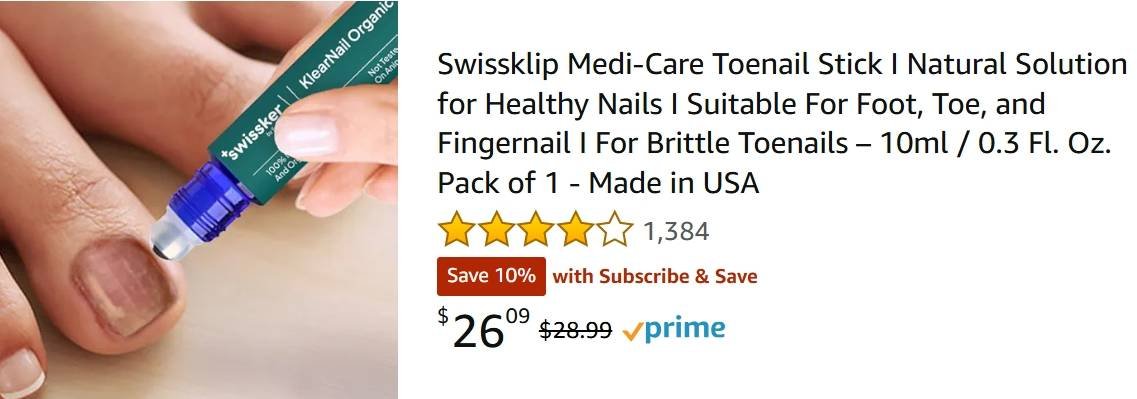Pros And Cons Of Laser Treatment For Toenail Fungus
Find a Podiatrist Near You
Get same-day appointments with verified podiatrists. Insurance accepted.
Key Takeaways:
- Laser treatment for toenail fungus is a non-invasive and effective method to eliminate the infection.
- The treatment works by using laser energy to target and destroy the fungus while leaving the surrounding tissue unharmed.
- While laser treatment offers several benefits, there are also some drawbacks to consider, such as the cost and the potential need for multiple sessions.
- It is important to consult with a healthcare professional to determine if laser treatment is the right option for you.
Laser treatment for toenail fungus has gained popularity in recent years as an effective and non-invasive method to eliminate the infection. This treatment works by using laser energy to target and destroy the fungus, while leaving the surrounding tissue unharmed. In this article, we will explore the pros and cons of laser treatment for toenail fungus and provide you with the information you need to make an informed decision.
Check out video below: Want to see exactly how it’s applied in real life? Watch this demonstration here: Should I Get Laser Treatment for My Fungal Toenails?
Pros of Laser Treatment for Toenail Fungus
1. Non-invasive
One of the major advantages of laser treatment for toenail fungus is that it is a non-invasive procedure. Unlike surgical options, laser treatment does not require any incisions or anesthesia. This means that there is no cutting or stitching involved, resulting in minimal pain and discomfort during and after the treatment.
2. Effective
Laser treatment has been found to be highly effective in eliminating toenail fungus. The laser energy penetrates the nail and destroys the fungus, killing it at its source. Studies have shown that laser treatment can achieve clearance rates of up to 80% or higher, making it a reliable option for those looking to get rid of their toenail fungus.
3. Minimal side effects
Compared to other treatment options such as oral medications, laser treatment for toenail fungus is associated with minimal side effects. Patients may experience some warmth or tingling during the procedure, but these sensations are generally well-tolerated. There is also no risk of liver damage, which can be a concern with certain oral antifungal medications.
4. Quick and convenient
Laser treatment for toenail fungus is a quick and convenient procedure. Depending on the severity of the infection, a single treatment session can usually be completed in less than 30 minutes. Most patients are able to resume their normal activities immediately after the treatment, with no downtime or recovery period required.
Cons of Laser Treatment for Toenail Fungus
While laser treatment for toenail fungus offers several benefits, there are also some drawbacks to consider before undergoing the procedure.
1. Cost
One of the main disadvantages of laser treatment is the cost. The procedure is typically not covered by insurance, and the out-of-pocket expenses can be significant. The exact cost may vary depending on factors such as the number of toes being treated and the location of the clinic. It is important to factor in the cost when considering laser treatment as an option.
2. Multiple sessions may be required
In some cases, multiple laser treatment sessions may be required to achieve optimal results. This is because the laser energy targets the fungus at different stages of its lifecycle. As a result, additional sessions may be necessary to ensure that all the fungus is eliminated. This can increase the overall cost and time commitment associated with laser treatment.
3. Results may not be immediate
While laser treatment is effective at killing toenail fungus, it may take some time to see noticeable improvements. It can take several months for a new and healthy nail to grow in, and the full results may not be visible until this process is complete. Patience and ongoing care are important factors to keep in mind when undergoing laser treatment.
Frequently Asked Questions
Q: Is laser treatment painful?
A: Laser treatment for toenail fungus is generally well-tolerated, with minimal pain or discomfort. Some patients may experience a warming or tingling sensation during the treatment, but this is temporary and typically subsides quickly.
Q: How long does each laser treatment session take?
A: The duration of each laser treatment session can vary depending on the severity of the infection and the number of toes being treated. In most cases, a single session can be completed in less than 30 minutes.
Q: Are there any risks or side effects associated with laser treatment?
A: Laser treatment for toenail fungus is generally safe, with minimal risks or side effects. Some patients may experience temporary redness or swelling of the treated area, which typically resolves within a few days.
Q: Can laser treatment be used for all types of toenail fungus?
A: Laser treatment can be effective for many types of toenail fungal infections. However, it is important to consult with a healthcare professional to determine if laser treatment is the right option for your specific case.
Resources:
Ready to See a Podiatrist?
Connect with top-rated podiatrists in your area. Book appointments instantly with verified doctors who accept your insurance.
Same-Day Appointments
Get seen today with urgent care availability
Verified Reviews
Real patient reviews and ratings
Insurance Accepted
Most major insurance plans covered
